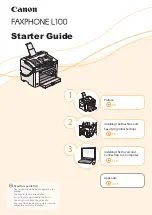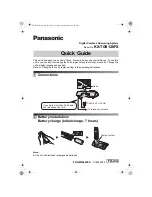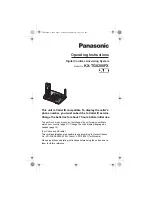
Utility Stitches
68
■
Quilting
Sandwiching batting between the top and bottom layers of
fabric is called “quilting”. Quilts can easily be sewn using
the walking foot* and the quilting guide*.
* Items sold separately, please contact your authorized
Baby Lock retailer.
a
Baste the fabric to be quilted.
b
Remove the presser foot and the presser foot holder.
• For details, refer to “Removing and attaching the
presser foot holder” on page 33.
c
Hook the connecting fork of the walking foot onto the
needle clamp screw.
d
Lower the presser foot lever, and then tighten the
presser foot holder screw with the screwdriver.
e
Select a stitch.
• For details, refer to “Stitch Chart” on page 49.
f
Place one hand on each side of the presser foot, and
then evenly guide the fabric while sewing.
Using the quilting guide (sold separately with some
models)
Use the quilting guide to sew parallel stitches that are
equally spaced.
a
Insert the stem of the quilting guide into the hole at the
rear of the walking foot or presser foot holder.
b
Adjust the stem of the quilting guide so that the guide
aligns with the seam that has already been sewn.
■
Free motion quilting
We recommend attaching the foot controller and sewing
at a consistent speed. You can adjust the sewing speed
with the speed control slide on the machine.
Note
• Thread the needle manually when using the
walking foot, or attach the walking foot only after
threading the needle using the needle threader.
• When quilting, use a 90/14 home sewing machine
needle.
• When sewing with the walking foot, sew at a speed
between slow and medium.
• When using the walking foot, test sew on a scrap
piece of fabric that is to be used in project.
Memo
• When [Automatic Fabric Sensor System] in the
settings screen is set to [ON], the thickness of the
fabric is automatically detected by the internal
sensor so the fabric can be fed smoothly for best
sewing results. (page 40)
1
Connecting fork
2
Needle clamp screw
CAUTION
• Be sure to securely tighten the screws with the
screwdriver, otherwise the needle may touch
the presser foot, causing it to bend or break.
• Before starting to sew, slowly turn the
handwheel toward you (counterclockwise) and
check that the needle does not touch the
presser foot. If the needle hits the presser foot,
the needle may bend or break.
a
b
No.
1-04
1-33
Stitch
Walking foot
Presser foot holder
CAUTION
• With free motion quilting, control the feeding
speed of the fabric to match the sewing speed.
If the fabric is moved faster than the sewing
speed, the needle may break or other damage
may result.
















































